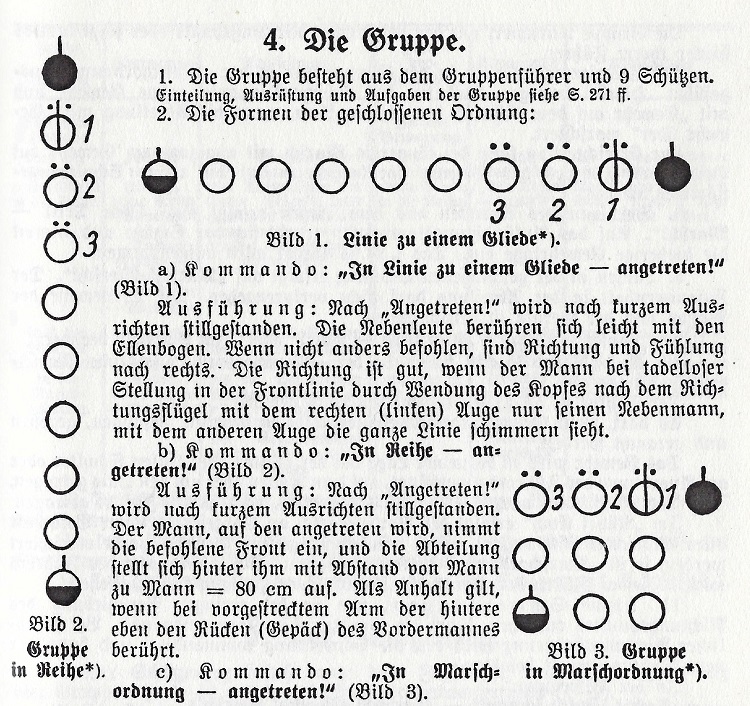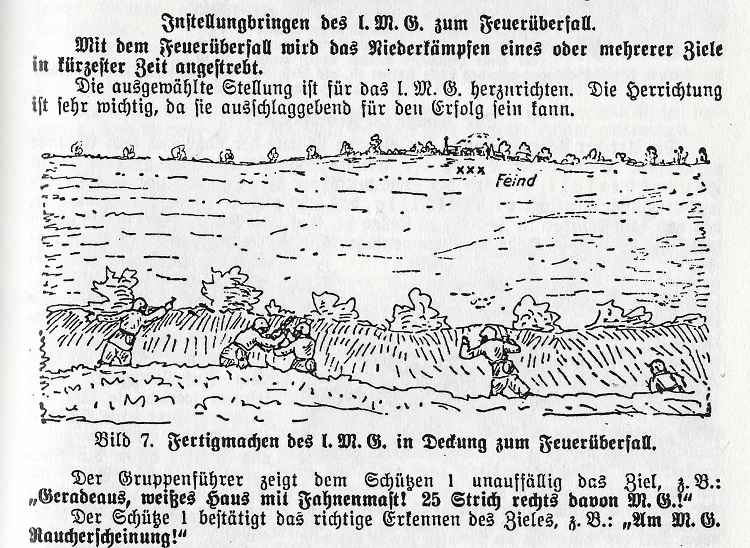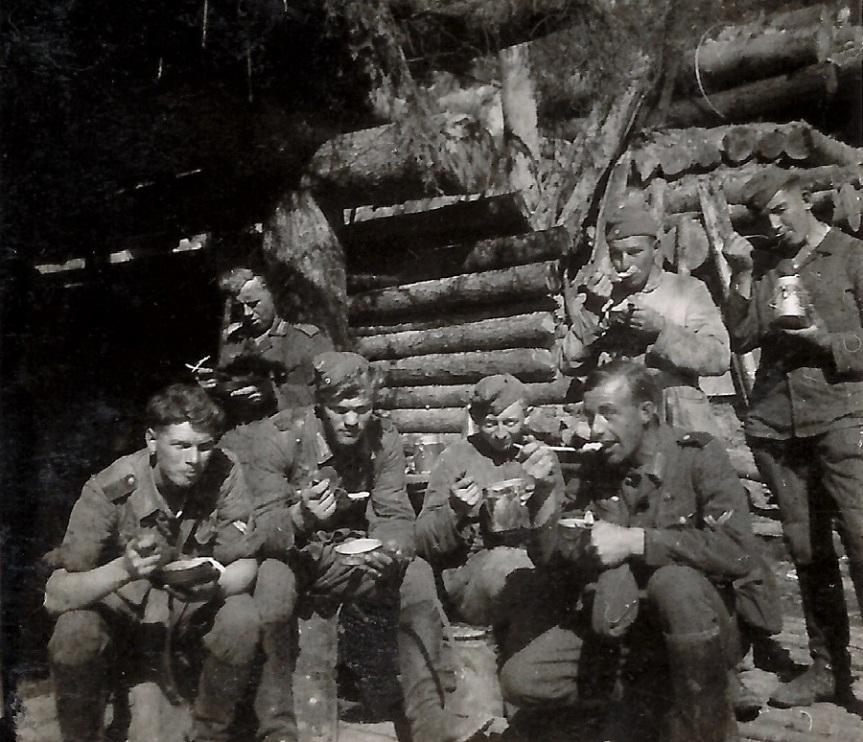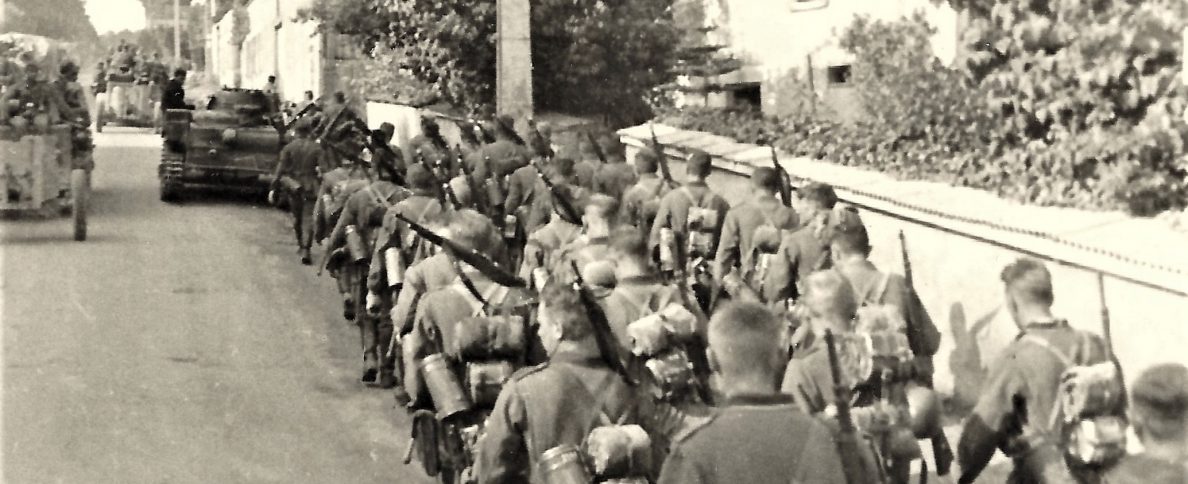The infantry squad is the smallest tactical unit. Its size has changed over the course of history, mostly due to the increase in firepower. In the German Heer (Army), the rifle squad numbered 13 soldiers in 1939, but experiences from the battles in Poland led to a reorganization in 1940, where the squad was reduced to a more manageable ten men. This setup was basically the same until late 1943, when the new divisions formed fielded squads of nine soldiers. When I did my military service in a motorized rifle company in the Swedish Army in the 1980s, a squad consisted of eight men.

The illustration above is from Der Dienstunterricht im Heere, an infantry training manual published in 1940, showing the organization of the 10-man squad. The column to the left shows the squad when in a rank, with (from top to bottom): the squad leader, the machine gunner (1), the assistant machine gunners (2, 3), five riflemen, and the assistant squad leader. The squad leader, usually an NCO with the rank of Unteroffizier, was armed with a submachine gun, while the machine gunner and the loader carried pistols for personal protection, and the third soldier (the ammunition carrier) in the machine gun team was armed with a rifle. The rest of the squad was armed with rifles, too.

It’s easy to think of the machine gun as a support weapon, as this is the way most armies used it, but in the German army of WW2, it was the rest of the squad that supported the machine gun team. It might seem like a technicality, but instead of having the MG laying down covering fire from the back while the riflemen advanced, the German infantry tactic was to use the MG team in a more aggressive way, the rest of the squad supporting it. While marksmanship was important, it wasn’t stressed to the extent of for example the British army.

Another illustration from the Dienstunterricht, showing the deployment of the MG team in a firefight. The squad leader (left) orders the MG team to fire at the enemy (“Feind“), while the ammunition carrier and another soldier are ready to provide additional fire, and to pass more ammo to the MG team. In addition to the MG, SMG and rifles, the squad also carried hand grenades, usually a couple per soldier.

There was another aspect to the squad, too, and that was that it was one’s “family”. You trained, marched, ate, slept and fought together, forming strong bonds of comradeship that was a greater motivator to fight hard (apart from mere survival), than any political convictions. German soldiers didn’t fight for Hitler; they fought for their comrades. While there was indoctrination and a conviction in the righteousness of the aim of the Nazi state, it was more important to not let your comrades down. Compared to the US Army infantry squad, the German squad was more close-knit. A soldier who had been wounded was usually sent back to his squad, while a US soldier more often than not ended up in a reinforcement pool and then assigned to another unit. This affected squad cohesion, and was one of the things the US army changed after the war.
The German soldier wasn’t some super-soldier, nor was he some brainless automaton. He had been trained to be aggressive in battle and to take initiative. He was at a disadvantage, though, as the Heer was far less motorized than the Allied armies, and that artillery support wasn’t available to the same extent. Still, even late in the war, the German infantry squad wasn’t to be underestimated.
Next: the German infantry platoon.


